Featured Image: Virgin Galactic
Release Time | July 11, 2021 – 15:25 UTC | 09:25 MDT |
|---|---|
Mission Name | Unity 22, the twenty-second flight of SpaceShipTwo |
Launch Provider | Virgin Galactic |
Customer | Virgin Galactic |
Rocket | SpaceShipTwo |
Launch Location | VMS Eve, Spaceport America, New Mexico, USA |
Payload mass | N/A |
Where did the spacecraft go? | Suborbital |
Did they attempt to recover the first stage? | Yes |
Where did the first stage land? | SpaceShipTwo will land on a runway at Spaceport America, New Mexico, USA |
Did they attempt to recover the fairings? | There are no fairings on SpaceShipTwo |
Were these fairings new? | There are no fairings on SpaceShipTwo |
How was the weather? | N/A |
This was the: | – 1st fully crewed flight of SpaceShipTwo – 22nd flight of VSS Unity – 12th mission for SpaceShipTwo – 4th crewed flight of VSS Unity |
Where to watch | Official replay Everyday Astronaut replay |
How did it go?
Virgin Galactic, a company founded by Richard Branson as part of the Virgin group, has successfully launched another crewed flight of their spacecraft VSS Unity, also known as SpaceShipTwo. The mission name is Unity 22, marking the 22nd mission. At the conclusion of the flight, each crew member received their official astronaut wings from former astronaut Chris Hadfield. Sir Richard Branson had some words to share with those back on Earth.
Virgin Galactic is calling it “fully crewed” – but please note that there are seats for up to 6 passengers. To add another exciting twist to an already thrilling event, the company’s founder Sir Richard Branson was among the crew travelling toward the edge of space. For the first time ever, Virgin Galactic livestreamed the entire event for the world to see.
Read up on their last flight here: SpaceShipTwo Test Flight | Virgin Galactic
Who’s on the Unity 22 mission?
VSS Unity has the ability to carry up to six people, two of which are trained and experienced pilots, while the others are passengers. For Unity 22, Dave Mackay and Michael Masucci served as the mission pilots of VSS Unity. The mothership, VMS Eve, was piloted by CJ Sturckow and Kelly Latimer. Accompanying the pilots of VSS Unity were Beth Moses, Colin Bennet, Sirisha Bandla, and Sir Richard Branson, who all hold great importance to the company’s success.
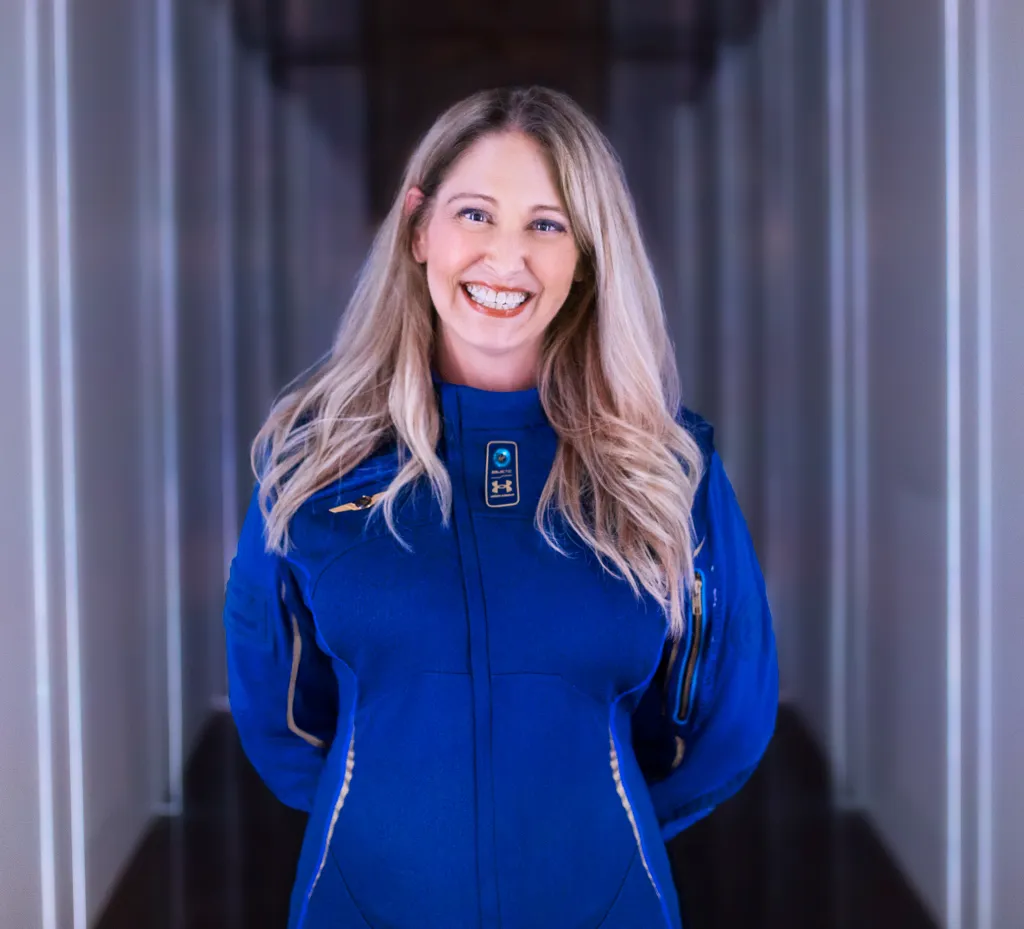
Beth Moses
As the Chief Astronaut Instructor at Virgin Galactic, Beth Moses holds critical importance to the Virgin Galactic team and their ventures into inviting the general public onto their flights. She graduated from Purdue University with bachelors and masters degrees in aeronautical and astronautical engineering.
Moses has flown once before for Virgin Galactic in February of 2019; she becomes the first person to release their harness and float about the cabin, on a suborbital flight.

Colin Bennett
Another important role in the success of Virgin Galactic, the Lead Operational Engineer, Colin Bennett is also flew on this mission. For the flight, Bennett performed critical tasks such as inspecting and evaluating cabin procedures, equipment, and gained his own perspective on the experience as a whole.

Sirisha Bandla
Sirisha Bandla, the Vice President of Government Affairs and Research Operations at Virgin Galactic, assisted with human-operated experiments. Bandla acted as a payload specialist as she used an experiment from the University of Florida. She used fixation tubes that were activated at various points in the flight.

Sir Richard Branson
A well-known name in recent decades, Sir Richard Branson, founder of Virgin Galactic and the Virgin Group itself also flew up on the 22nd flight of VSS Unity.
He played the important role of experiencing what a future private astronaut will go through. This includes the preflight training as well as the flight itself. He gave a detailed report of his flight from his perspective so future astronauts can know what to expect.
What is SpaceShipTwo?
SpaceShipTwo is a rocket powered spaceplane that launches from under the wing of a carrier aircraft. It uses a hybrid rocket engine to boost itself up to beyond the edge of space to give paying passengers a few minutes of weightlessness.
VSS Unity is the second SpaceShipTwo vehicle. The previous vehicle, VSS Enterprise, crashed in 2014 in an accident which killed the co-pilot Michael Alsbury. The pilot, Peter Siebold, also suffered severe injuries in the accident. That flight was from Mojave Air and Space Port, California, before Virgin Galactic moved its operations to New Mexico. An investigation found that the crash occurred when the tail section accidentally moved into the tethered position during powered ascent.
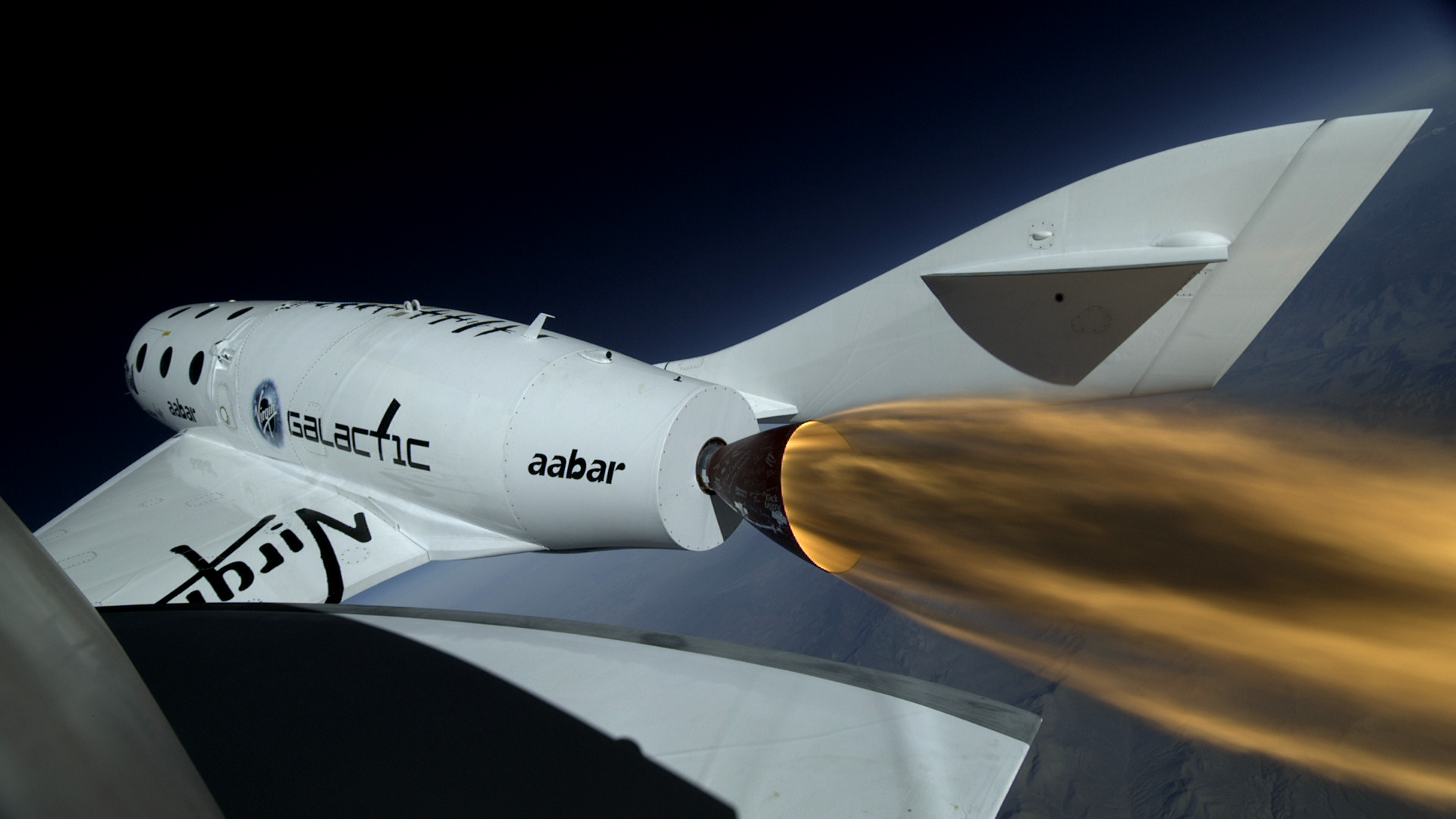
SpaceShipTwo and its mothercraft, White Knight Two, were designed and built by The Spaceship Company, formed by Burt Rutan and Sir Richard Branson in 2005. Burt Rutan’s pre-existing company, Scaled Composites, previously built and flew SpaceShipOne.
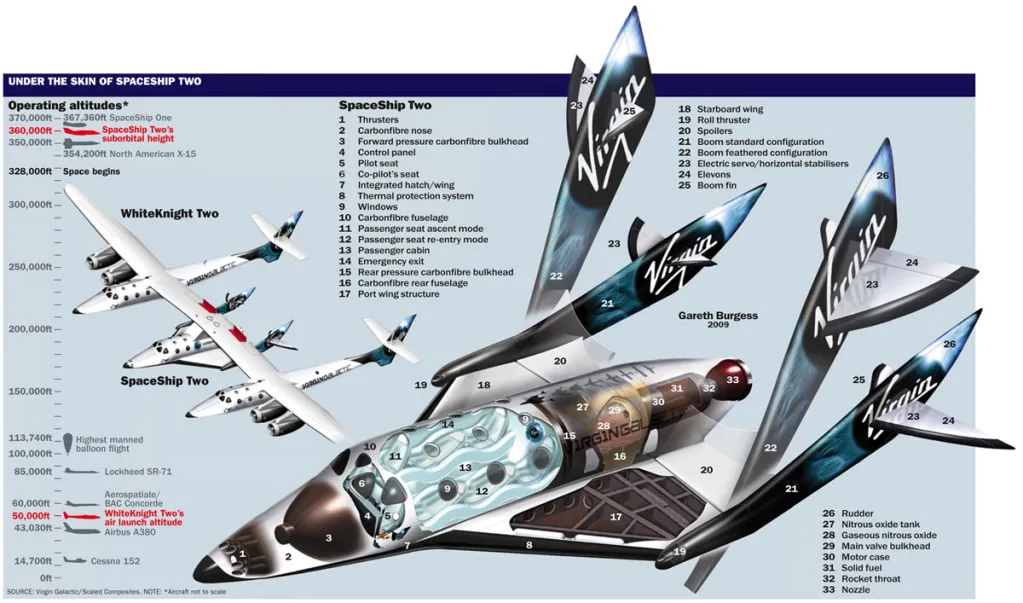
SpaceShipTwo is designed to fly with two flight crew and six passengers. It uses its onboard rocket motor for powered ascent following separation from White Knight Two. On reaching apogee, it deploys a special feathered tail section in order to gain the proper nose-down attitude prior to reentry.
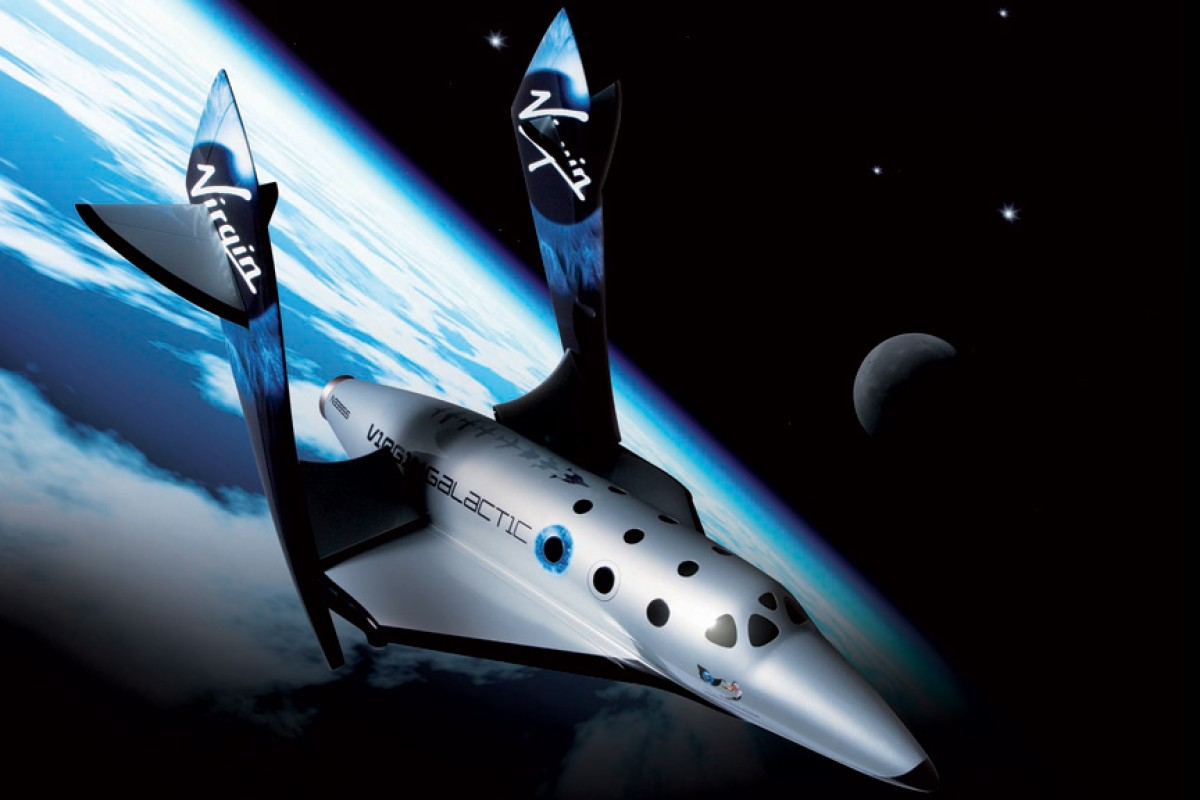
SpaceShipTwo’s rocket motor
SpaceShipTwo originally used a hybrid motor developed by Sierra Nevada Corporation. This engine used hydroxyl-terminated polybutadiene (HTPB) as fuel and nitrous oxide (N20) as oxidizer. A hybrid engine is one in which the fuel and oxidizer exist in different phases of matter. In this case, the fuel is solid, and the oxidizer is stored as liquid and consumed as a gas.
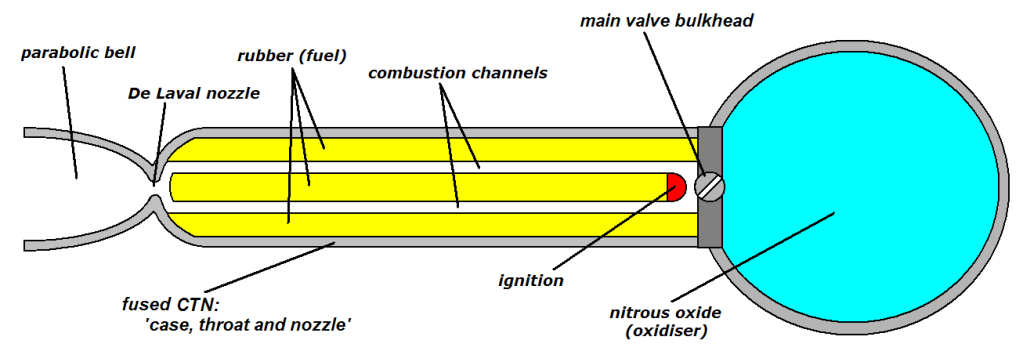
Around the time of the crash of VSS Enterprise, Virgin Galactic experimented with changing the engine design to run on a polyamide plastic fuel instead of HTPB. Since then, however, Virgin has switched back to using HTPB again, but now produces the current RocketMotorTwo engines in house instead of buying them from SNC.
What is White Knight Two?
White Knight Two is the carrier aircraft that takes SpaceShipTwo up from local ground level to an altitude above mean sea level of 15,000 m (50,000 ft). The carrier aircraft then releases SpaceShipTwo which begins its own powered flight seconds later.
White Knight Two then returns to land under normal jet engine power, as during its ascent. The aircraft has four Pratt & Whitney PW308 engines and two fuselages. Each engine provides 30.7 kN (6,900 lbf) of thrust. One fuselage holds the active cockpit for control of the aircraft, while the other fuselage is a direct copy of SpaceShipTwo. This is so that White Knight Two can be used for training crew and passengers on what to expect for their flights on board SpaceShipTwo.

The first White Knight Two vehicle, VMS Eve, flew for the first time in 2008. It has a flight crew of two people, plus additional people to take part in the deployment of the spacecraft, and those undergoing training for SpaceShipTwo.
White Knight Two has a service ceiling of 21,000 m (70,000 ft), based on a relatively large wingspan of 43 m (141 ft).





Congratulations to Sir Branson and crew for a successful flight.